
Roots
Consider for a moment the subtle shifts in our natural world, the quiet signals the earth offers when conditions become harsh. A plant may shed its leaves, a stream might slow its flow. Similarly, our hair, particularly textured strands, holds a remarkable connection to our inner landscape, a delicate barometer of our physiological state. When the body endures periods of prolonged tension, be it from environmental challenges or internal disquiet, this experience leaves its mark, often beginning at the very foundation of hair growth ❉ the follicle.
Unpacking how these minute biological structures respond to strain, and how a mindful, gentle approach to care can mitigate such impacts, offers a profound understanding of hair health. It is a dialogue between the visible and the unseen, a conversation between our daily rituals and the cellular processes that govern vitality.
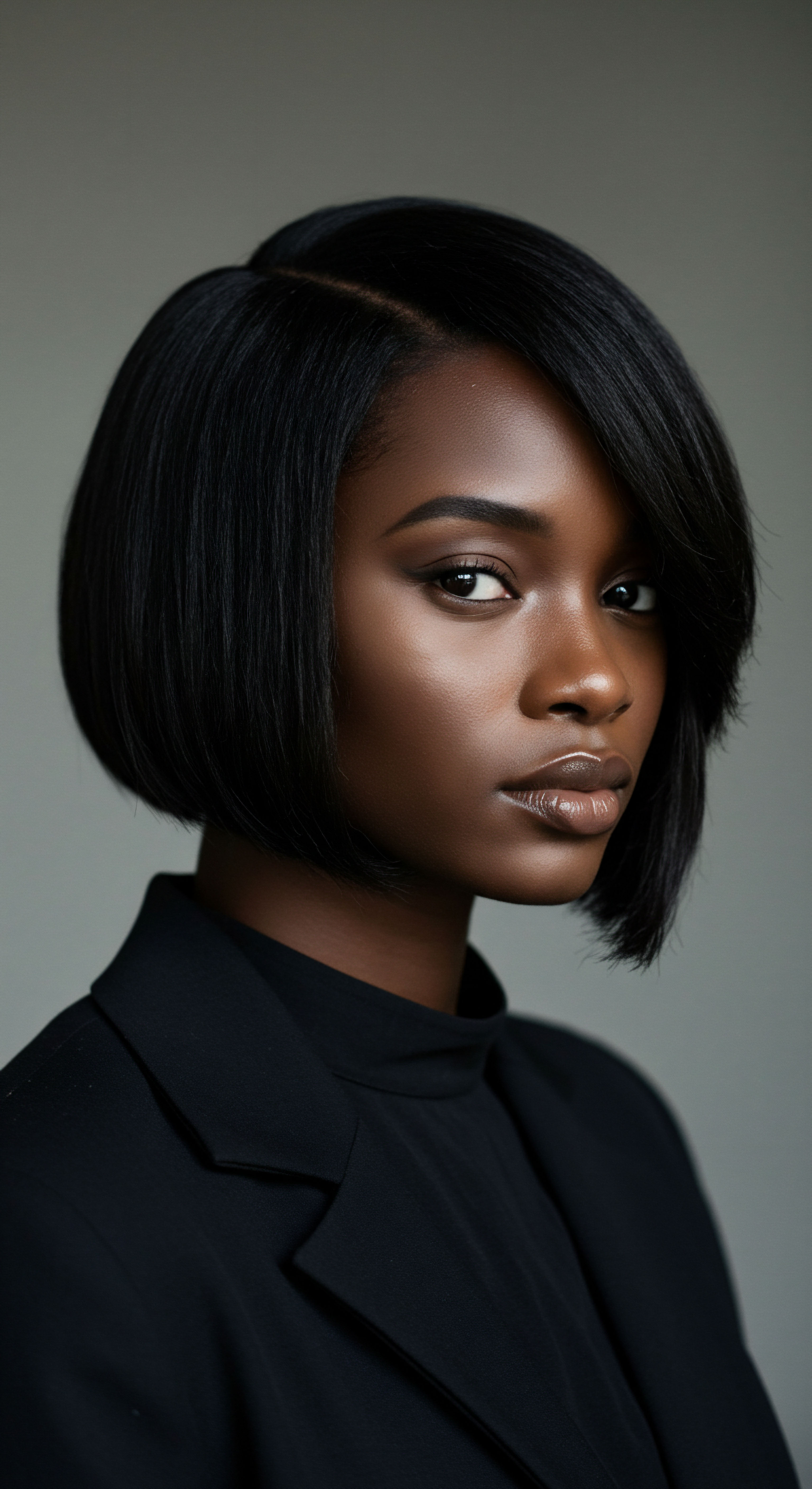
Hair Follicle Architecture and Its Delicate Balance
The hair follicle, a mini-organ residing within the skin, stands as a marvel of biological design. Each one is a complex structure, comprising numerous cell types that collaborate in a synchronized cycle of growth and rest. At its base lies the Dermal Papilla, a cluster of specialized cells receiving nourishment from blood vessels, playing a directing role in hair formation. Surrounding this, the Hair Matrix contains rapidly dividing cells that differentiate to produce the hair shaft.
This intricate cellular arrangement is encased by various sheaths, both inner and outer, which provide structural support and guide the growing strand. The health of this microscopic ecosystem dictates the vigor and longevity of each individual hair. When external or internal pressures arise, this finely tuned system can waver.
Physiological strain, whether chronic stress or systemic inflammation, sends signals throughout the body. For the hair follicle, these signals can disrupt the normal cell communication and metabolic processes that keep it thriving. Imagine a bustling, well-ordered workshop where suddenly, essential supplies are delayed, or the workers become fatigued.
The output diminishes. This is akin to what happens at the cellular level within the follicle when faced with persistent stress.
The hair follicle, a marvel of biological design, functions as a sensitive barometer of our physiological state.

The Language of Textured Strands
Textured hair, with its diverse curl patterns, coiling, and unique structural characteristics, presents its own set of considerations for well-being. The very shape of a curly or coily strand means that the cuticle, the protective outer layer, is often more exposed at its curves, potentially making it more vulnerable to external forces. Understanding this inherent architecture is a first step toward a care philosophy that respects its natural inclinations rather than working against them. The physical attributes of textured hair are not merely aesthetic; they reflect generations of adaptation and resilience.
The language used to describe textured hair types often refers to curl pattern classifications, but beyond simple numbering and lettering, there is a deeper vocabulary of hair health. It encompasses terms that speak to its hydration needs, its protein balance, and its response to environmental conditions. A gentle approach to hair care acknowledges these specific needs, recognizing that a method suitable for one hair type may not serve another with the same kindness.
- Hair Matrix Cells ❉ Rapidly dividing cells that construct the hair shaft.
- Dermal Papilla ❉ A group of cells at the follicle base that regulates hair growth.
- Inner Root Sheath ❉ Guides the growing hair shaft and protects it.
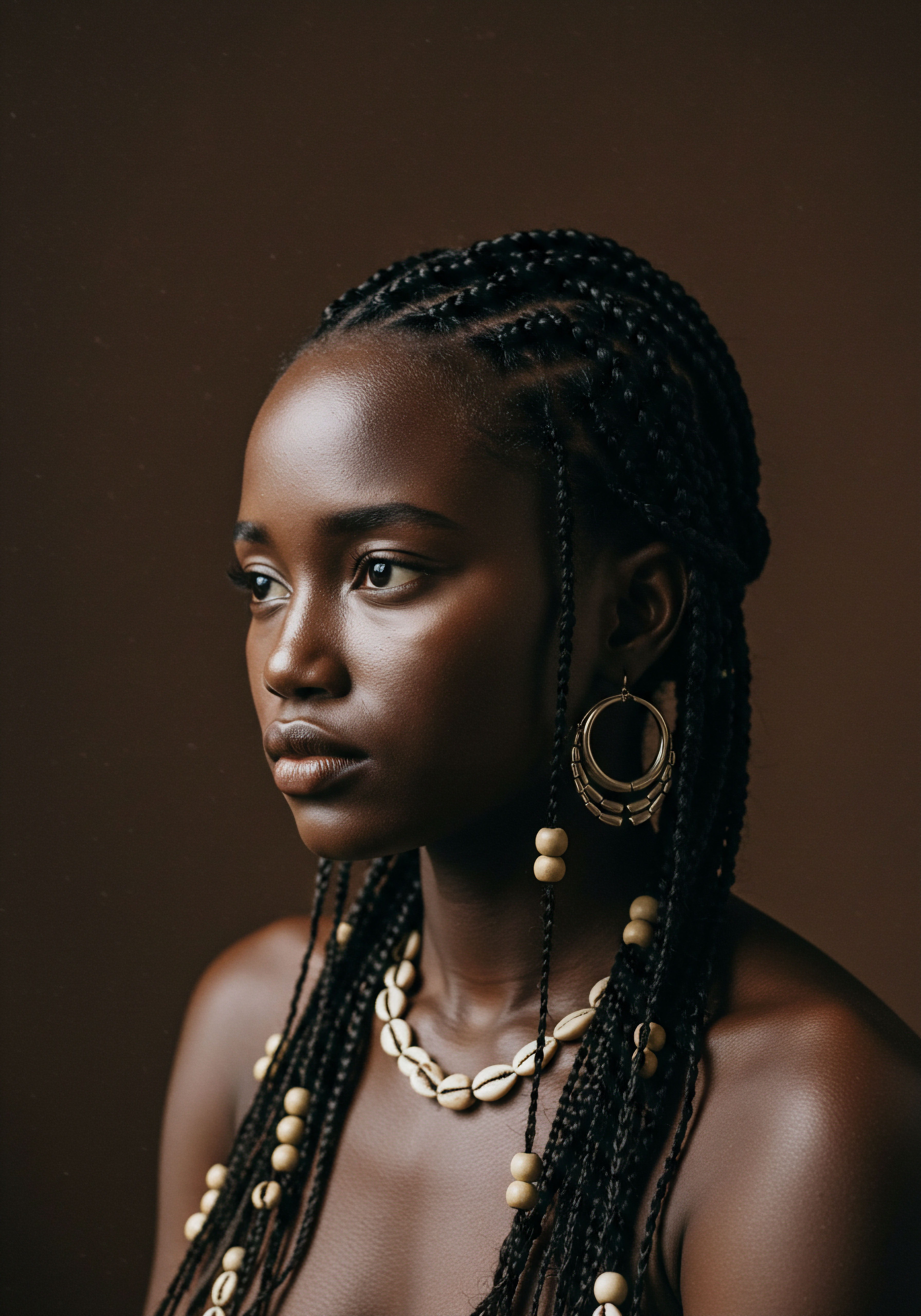
Hair Growth Cycles and Their Vulnerabilities
Hair growth proceeds in distinct phases, a cyclical rhythm that governs every strand on our scalp. The Anagen Phase is the active growth period, lasting several years, during which hair cells divide rapidly, and the strand lengthens. This transitions into the Catagen Phase, a brief, regressive period where growth ceases, and the follicle shrinks. Finally, the Telogen Phase is a resting period, typically lasting a few months, after which the old hair sheds, and a new anagen phase begins.
Physiological strain can disrupt this delicate cycle. Chronic stress, for example, can prematurely push a higher percentage of hair follicles into the telogen (resting) phase, leading to increased shedding, a condition often called telogen effluvium. This happens because the body, under duress, diverts resources away from non-essential functions like hair growth. The Harvard University research by Hsu’s team, published in Nature, highlighted how chronic stress in mice increased levels of corticosterone (the rodent equivalent of human cortisol), which in turn kept hair follicle stem cells in an extended resting phase.
This stress hormone prevented the dermal papilla from secreting GAS6, a molecule known to activate hair follicle stem cells, thereby inhibiting hair regrowth. This observation reveals a profound biological mechanism linking systemic strain to the visible condition of our hair.
Consider the table below, which outlines the hair growth cycle and how physiological strain can influence each stage:
| Cycle Phase Anagen (Growth) |
| Description Active growth, cells divide rapidly. |
| Impact of Physiological Strain Shortened duration, leading to thinner, shorter hairs. |
| Cycle Phase Catagen (Transition) |
| Description Follicle shrinks, growth ceases. |
| Impact of Physiological Strain Accelerated entry, moving hairs to resting phase quicker. |
| Cycle Phase Telogen (Resting/Shedding) |
| Description Hair rests, then sheds; new hair prepares to grow. |
| Impact of Physiological Strain Extended duration, resulting in increased shedding and delayed regrowth. |
| Cycle Phase Understanding these phases illuminates how internal conditions manifest as visible hair changes. |
By understanding these foundational aspects, we gain a clearer view of why gentle care practices hold such weight. They are not merely superficial acts; they are interventions that can soothe the follicle, encourage its proper rhythm, and help counteract the physical burdens it might carry.
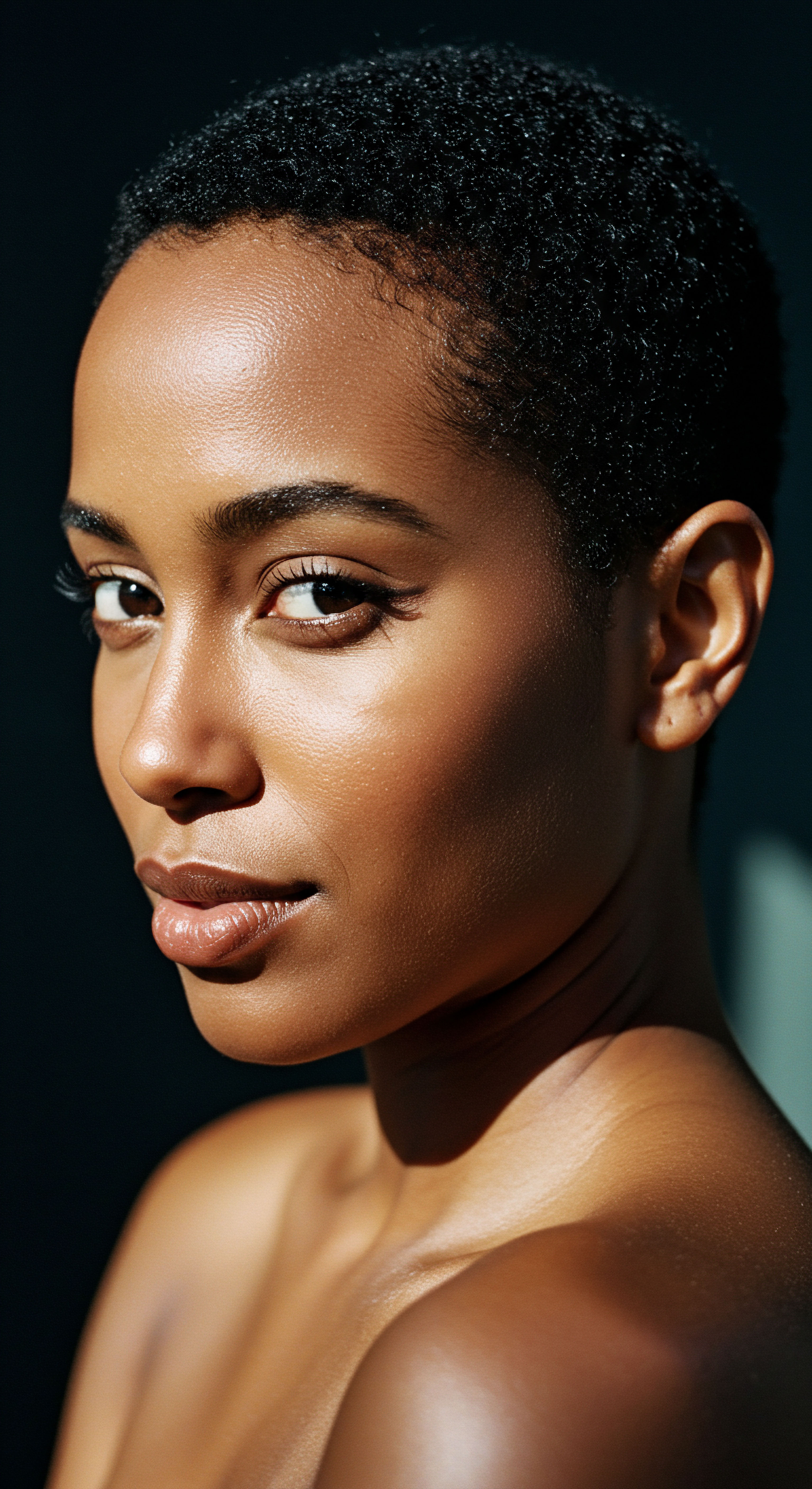
Ritual
Stepping into the space of hair care rituals, we seek more than simple steps; we search for practices that honor the intrinsic nature of our strands and offer respite from the day’s demands. The question of whether gentle care practices can truly lessen the physiological strain on hair follicles finds its answer not just in scientific understanding, but in the deliberate, thoughtful ways we approach our hair each day. It is about moving from routine to ritual, imbuing each action with intention and tenderness. This approach, rooted in both traditional wisdom and modern understanding, provides a pathway to healthier, more resilient hair.

The Art of Gentle Cleansing and Conditioning
The act of cleansing is often seen as a straightforward necessity, yet for textured hair, it requires a delicate touch. Harsh cleansers, laden with sulfates, can strip the hair and scalp of their natural oils, leading to dryness and irritation. This can inadvertently trigger a stress response in the scalp, impacting the delicate environment surrounding the hair follicles. A more considerate approach involves selecting sulfate-free, moisturizing cleansers that respect the scalp’s natural lipid barrier.
Applying shampoo primarily to the scalp, rather than scrubbing the entire length of the hair, cleanses where it is most needed—removing product buildup, dead skin, and excess sebum—without over-drying the more fragile lengths. Following with a generous application of conditioner is equally vital. Conditioner works to moisturize, detangle, and seal the cuticle, reducing friction and preventing breakage.
For dry or curly hair, applying conditioner from root to tip provides comprehensive coverage, ensuring every strand receives its share of moisture and protection. This method of washing, often practiced in communities with long histories of textured hair care, minimizes mechanical stress during a vulnerable state.
Shifting from mere routine to intentional ritual transforms hair care into a calming practice.

Detangling with Reverence
Perhaps no single practice demonstrates the power of gentle care more clearly than detangling. Textured hair, by its very nature, is prone to tangling due to its curl pattern. Forcing a comb through knots can cause significant mechanical strain, leading to breakage and even damaging the follicle itself, potentially contributing to conditions like traction alopecia over time.
The key to successful detangling lies in patience and preparation.
- Hydration is Paramount ❉ Always detangle hair when it is wet and saturated with a slippery conditioner or a dedicated detangling product. This provides a buffer, allowing strands to glide past each other.
- Sectioning for Control ❉ Divide hair into smaller, manageable sections. This reduces the overall volume of hair being handled at once, making the process less daunting and more effective.
- Tool Selection ❉ Opt for a wide-tooth comb or even fingers over fine-tooth combs or brushes. These tools are less likely to snag and pull.
- Bottom-Up Approach ❉ Start detangling from the ends of the hair, working upwards towards the scalp. This allows for the gradual release of knots without pulling on the roots.
This methodical approach drastically reduces the physical strain on the hair shaft and, by extension, the follicle. It honors the hair’s structure, allowing it to yield without undue force, preserving its integrity and length.

Protective Styling as a Shield
Certain hairstyles, known as protective styles, serve as a physical shield for textured hair, minimizing exposure to environmental aggressors and reducing the need for daily manipulation. Styles like braids, twists, and buns, when installed with low tension, tuck away the delicate ends of the hair, which are most prone to breakage. This reduction in daily handling translates directly to less mechanical strain on the hair follicles.
A crucial aspect of protective styling is ensuring that the style does not create excessive tension on the scalp. Tight braids or ponytails, for instance, can cause a form of physiological strain known as Traction Alopecia, where constant pulling damages the hair follicle over time, potentially leading to permanent hair loss. The intention behind protective styling is indeed protective, but the execution must prioritize the health of the follicle above all else. This means:
- Avoiding Excessive Pull ❉ Styles should feel comfortable, never painful.
- Varying Placement ❉ Do not always wear styles that pull in the same direction or from the same scalp areas.
- Limiting Wear Time ❉ Give the hair and scalp breaks between protective styles to rest and breathe.
The practice of protective styling, when applied thoughtfully, becomes a powerful ally in lessening the impact of physiological strain. It allows the hair to rest, to accumulate moisture, and to avoid the daily wear and tear that can contribute to follicle fatigue. The table below provides a quick overview of how gentle care practices reduce different types of strain.
| Practice Gentle Cleansing |
| Type of Strain Reduced Chemical, Inflammatory |
| Mechanism Preserves scalp barrier, avoids irritation. |
| Practice Conditioning |
| Type of Strain Reduced Mechanical, Environmental |
| Mechanism Reduces friction, smooths cuticle, provides moisture. |
| Practice Careful Detangling |
| Type of Strain Reduced Mechanical |
| Mechanism Minimizes breakage, pulling on follicles. |
| Practice Low-Tension Protective Styles |
| Type of Strain Reduced Mechanical, Environmental |
| Mechanism Reduces daily manipulation, shields hair ends. |
| Practice These actions, when consistently applied, form a shield against common stressors. |

How Does Consistent Gentle Application Bolster Follicle Resilience?
Consistent application of gentle care practices works synergistically to bolster the hair follicle’s natural resilience. By minimizing physical trauma, chemical irritation, and undue tension, these practices create an environment where the follicle can operate optimally. Less irritation means less inflammation, which research indicates can contribute to hair follicle miniaturization and loss. A healthy, calm scalp is a fertile ground for hair growth.
When the scalp’s microbiome is balanced, and its barrier function is intact, the hair follicles are less susceptible to external aggressors and internal inflammatory responses. Gentle care allows the follicle to focus its energy on its primary purpose ❉ growing strong, healthy hair, rather than constantly repairing damage or reacting to perceived threats. This sustained nurturing translates into longer, more robust anagen phases and a reduction in premature shedding, ultimately contributing to denser, more vibrant hair.
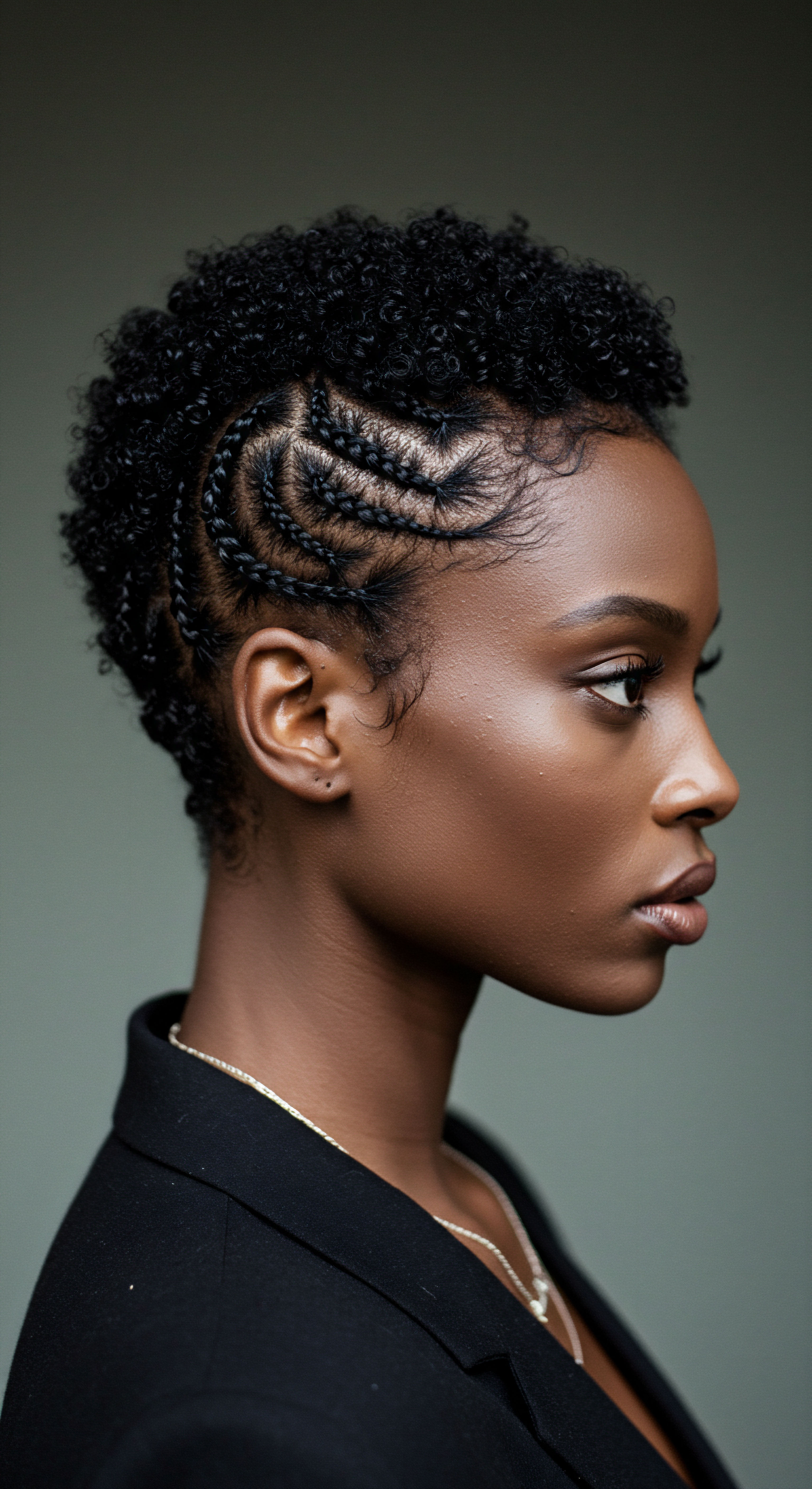
Relay
To consider the deeper currents that influence hair follicle well-being, we must look beyond the immediate and recognize the intricate connections within our being and across generations. How do the silent signals of our inner world and the echoes of our past truly shape the vitality of our strands? This question invites us into a more profound exploration, where the physiological strain on hair follicles is understood not as an isolated event, but as a point where biology, psychology, and cultural practices intersect. Here, we observe how gentle care, when approached with this broader understanding, transforms into a powerful ally, a relay of wisdom passed down and scientifically affirmed.
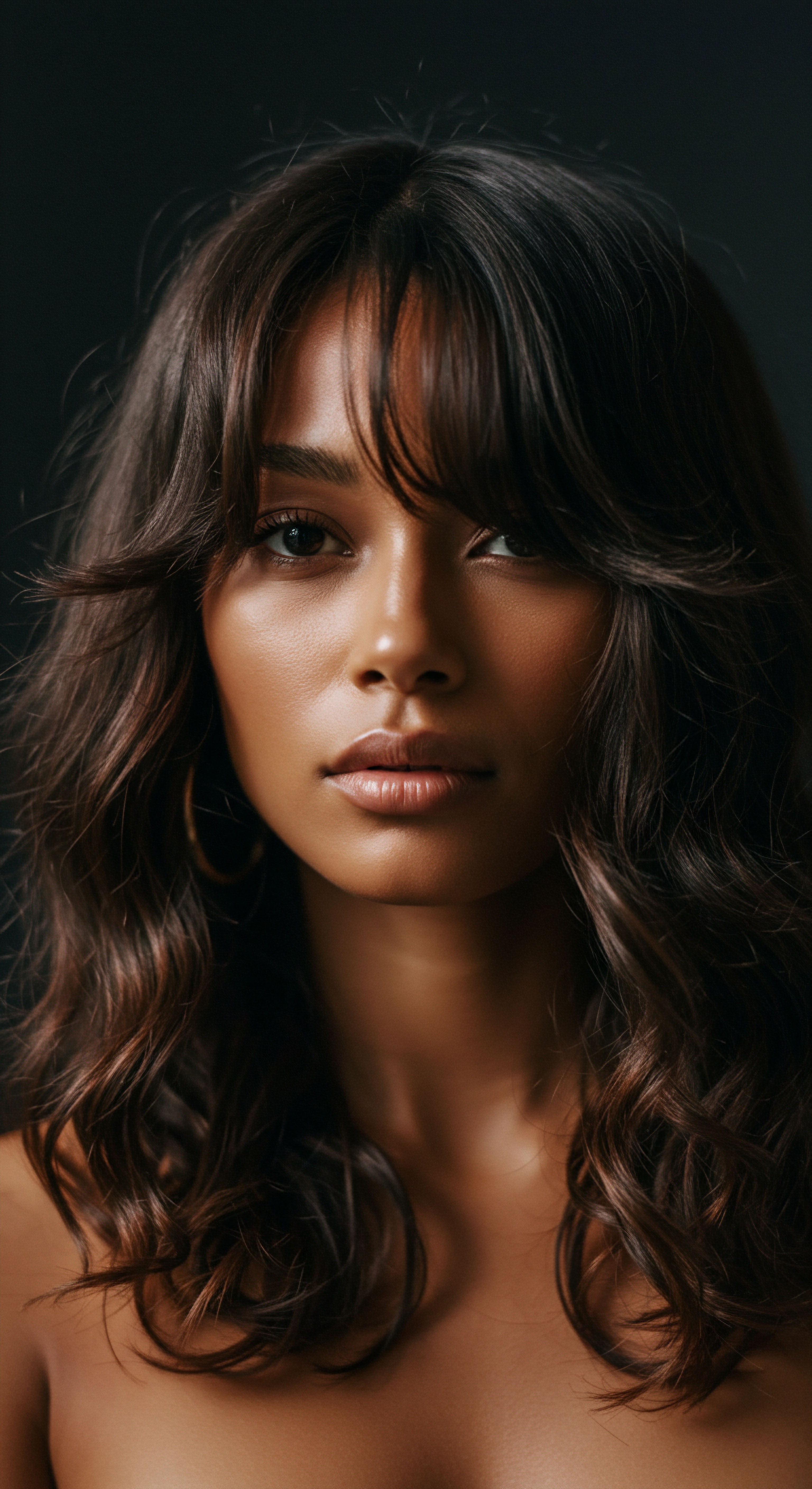
The Psycho-Physiological Connection to Hair Health
The link between our mental state and physical well-being is undeniable, and the hair follicle is no exception to this profound interplay. Prolonged periods of emotional duress can initiate a cascade of physiological responses that directly impact hair growth. The body’s stress response system, often involving the hypothalamic-pituitary-adrenal (HPA) axis, releases hormones like cortisol into the bloodstream. While essential for short-term survival, chronic elevation of these hormones can have detrimental effects on various bodily systems, including the hair growth cycle.
A significant area of research explores how these stress hormones directly influence hair follicle stem cells. As noted previously, the Harvard study in Nature demonstrated that increased corticosterone levels in mice led to an extended resting phase for hair follicle stem cells by suppressing the production of GAS6 from the dermal papilla. This mechanism, while observed in mice, offers a compelling parallel to human experience, suggesting that chronic psychological strain can indeed push hair follicles into a prolonged state of dormancy, leading to increased shedding and thinning over time.
Furthermore, the scalp’s delicate microbiome plays an underappreciated yet critical role in this connection. An imbalance in the scalp’s microbial community, often referred to as dysbiosis, can contribute to inflammation, which in turn stresses the hair follicles. Psychological stress can influence systemic inflammation and immune responses, thereby indirectly impacting the scalp’s microbial balance. Gentle care practices, such as mindful cleansing and scalp treatments that respect the microbiome, do more than just clean; they help maintain this delicate ecosystem, reducing a potential source of inflammatory strain on the follicles.
The intricate dance between our inner landscape and the hair follicle reveals how emotional states leave their mark on our strands.

Ancestral Wisdom and Modern Science Converge
Across cultures, particularly within communities with rich traditions of textured hair care, practices rooted in observation and intergenerational knowledge have long emphasized gentleness. These traditions often incorporate elements like slow, deliberate detangling, regular oiling of the scalp, and protective styling—methods now increasingly supported by scientific understanding of hair biology and physiology.
For instance, the practice of scalp massage, common in many traditional hair care regimens, has been shown to potentially improve blood flow to the hair follicles, thereby ensuring a better supply of nutrients and oxygen. Some research indicates that regular scalp stretching, through massage, may even activate genes involved in hair production, with studies showing an increase in hair thickness after consistent application of electric massagers over several months. This suggests a direct physiological benefit to a practice long valued for its calming and circulatory effects.
Consider the historical emphasis on natural ingredients—plant oils, butters, and herbal infusions—in traditional care. Many of these ingredients possess antioxidant or anti-inflammatory properties, which modern science now links to combating oxidative stress and inflammation, two key contributors to hair follicle damage and premature hair loss. The wisdom of these practices, once passed down through observation and experience, now finds its echo in the molecular pathways being explored in laboratories.
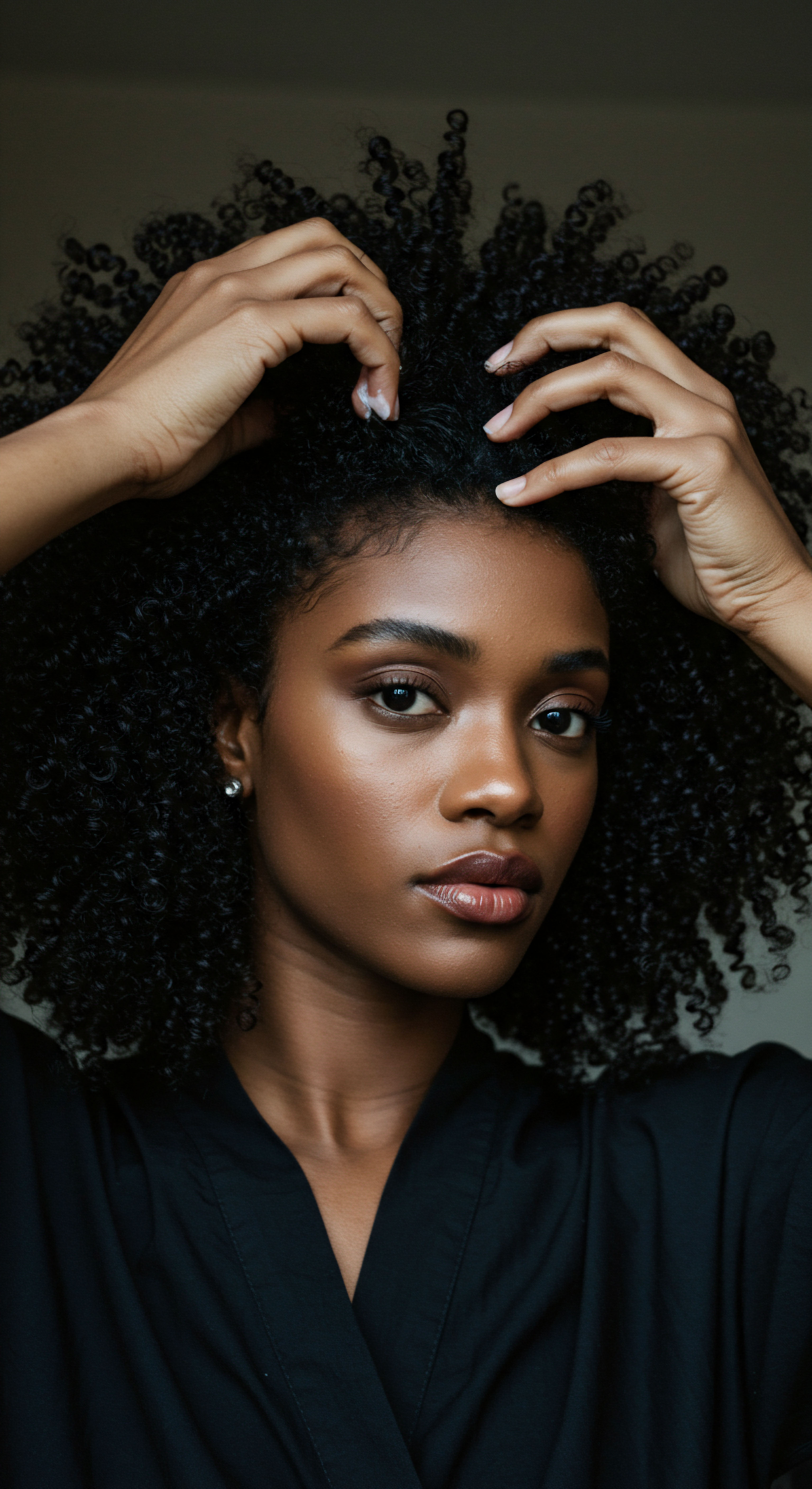
Environmental Stressors and Hair Follicle Resilience
Beyond internal physiological responses, external environmental stressors impose their own strain on hair follicles. Pollution, UV radiation, and even hard water can introduce reactive oxygen species (ROS) that lead to oxidative stress in the scalp and hair follicles. Oxidative stress damages cellular structures, impedes cell renewal, and can accelerate the aging process of the scalp, impacting the hair follicle’s ability to support healthy growth.
A less commonly discussed but significant physiological strain comes from Mechanical Stress. This includes friction from rough pillowcases, aggressive towel drying, or tight hair accessories. While seemingly minor, the cumulative effect of thousands of friction events can chip away at the hair’s cuticle, leading to breakage and weakening the hair shaft. This continuous physical burden can extend down to the follicle, causing irritation and potentially contributing to conditions like traction alopecia.
The impact of environmental factors and daily mechanical friction on hair health can be quantified. A study by Slipssy, a company producing friction-reducing pillowcases, calculated that for someone who moves frequently in their sleep, even if only one-third of movements affect a specific hair zone, this could result in approximately 4,800–5,000 friction events per year per side. Over 14 months, this could surpass 16,800 friction events.
Reducing even half of these friction events, through the use of smoother fabrics or mindful handling, can significantly lessen the physical strain on hair strands and, by extension, the follicles. This kind of data underscores that seemingly small acts of gentleness accumulate into substantial protective benefits for the hair’s foundation.
Gentle care practices, therefore, serve as a multifaceted defense. They are not merely about aesthetics; they are a conscious effort to reduce the physiological burden on our hair follicles, allowing them to perform their vital work of producing healthy, vibrant strands. This comprehensive approach, honoring both scientific understanding and the wisdom of tradition, forms a protective shield around the very roots of our hair.
- Oxidative Stress ❉ Damage to cells and DNA caused by an imbalance between free radicals and antioxidants.
- Microbiome Dysbiosis ❉ An imbalance in the microbial community on the scalp, potentially leading to inflammation.
- Traction Alopecia ❉ Hair loss caused by consistent pulling or tension on hair follicles.

What Can Gentle Care Practices Accomplish for Follicle Longevity?
Gentle care practices can significantly extend the productive lifespan of hair follicles by creating an environment conducive to their optimal function. By minimizing mechanical trauma, such as aggressive brushing or tight styling, we prevent physical damage to the follicle structure and the delicate dermal papilla, which is essential for initiating and sustaining hair growth cycles. Reduced chemical exposure from harsh products helps maintain the scalp’s natural barrier and microbial balance, thereby mitigating inflammation and oxidative stress that can prematurely age follicles and shorten their anagen phase. When follicles are not constantly battling external stressors, they can allocate their energy towards healthy cell division and protein synthesis, supporting robust hair shaft production.
This consistent reduction in physiological burden allows the follicle to complete its growth cycles more efficiently and for longer durations, thereby postponing miniaturization and preserving hair density over time. It is a sustained act of biological support, allowing the hair’s fundamental units to thrive without unnecessary impedance.
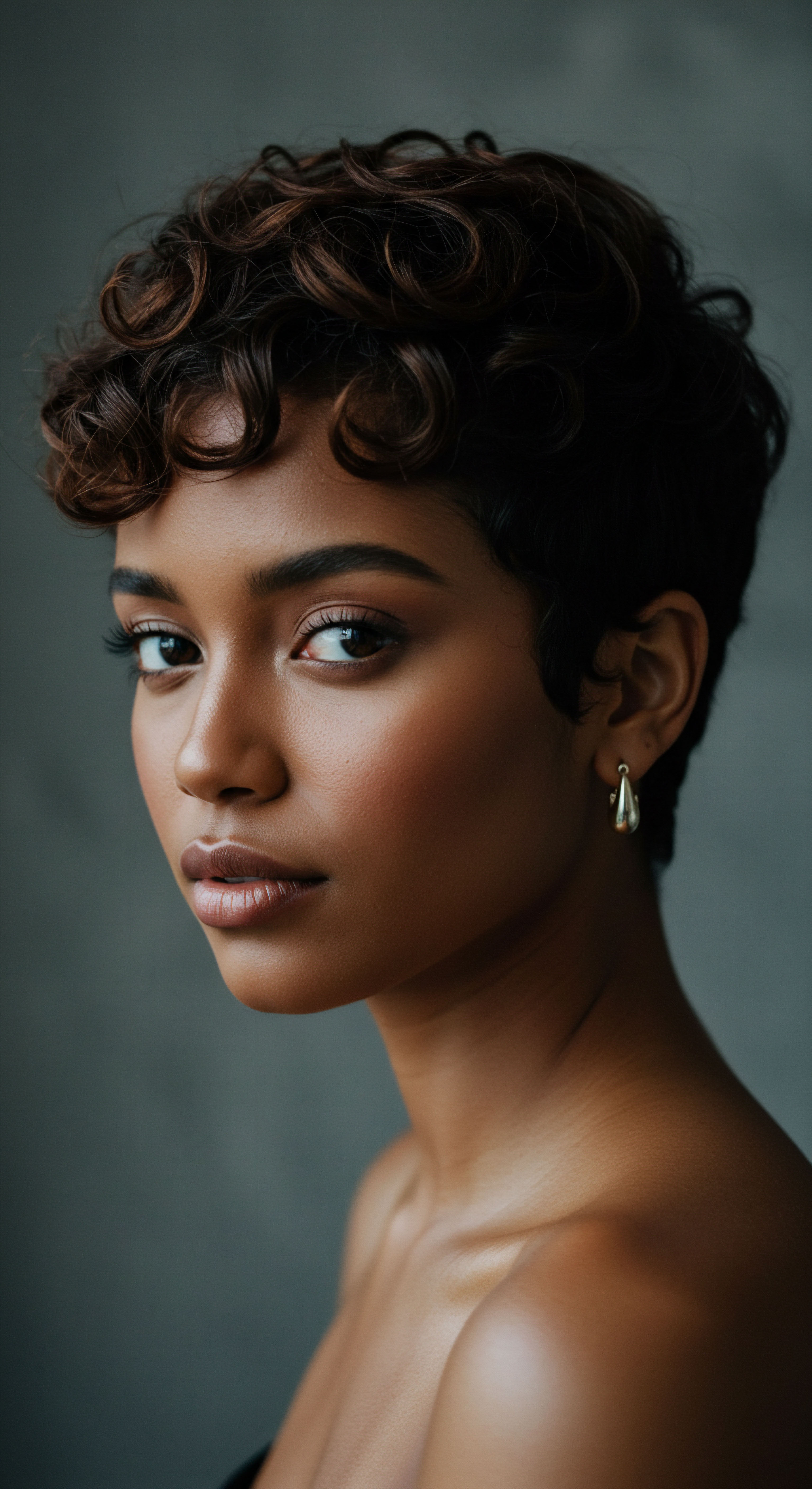
Reflection
Our exploration reveals a truth that echoes through the quiet wisdom of generations and the meticulous findings of modern science ❉ the vitality of our hair, especially textured hair, is deeply intertwined with the care we offer it. This care extends beyond superficial treatments, reaching into the very biological rhythms of the hair follicle and the broader landscape of our well-being. By understanding the subtle yet powerful impacts of physiological strain—be it from internal stressors like chronic tension or external forces like environmental pollutants and harsh manipulation—we gain a profound appreciation for the deliberate acts of gentleness.
These practices, when embraced with awareness, do more than just protect; they nourish the very roots of our being, allowing our strands to tell a story of resilience, reverence, and radiant health. The journey toward thriving hair is a testament to mindful living, a continuous conversation between science and the gentle touch.

References
- Choi, S. Zhang, B. Ma, S. et al. (2021). Corticosterone inhibits hair follicle stem cell activation and hair growth through the dermal papilla. Nature, 592(7854), 428-432.
- Hsu, Y. C. (2021). Researchers discover how chronic stress leads to hair loss. Harvard Gazette.
- Trüeb, R. M. (2009). Oxidative stress in ageing of hair. International Journal of Trichology, 1(1), 6-14.
- Trüeb, R. M. (2021). Nutrition for Healthy Hair ❉ Guide to Understanding and Proper Practice. Springer.
- Chandrashekar, B. S. (2018). IADVL Textbook of Trichology. Jaypee Brothers Medical Publishers.
- Alessandrini, A. Starace, M. & Piraccini, B. M. (2023). Hair Anatomy and Physiology ❉ What You Need to Know. In A. Tosti & B. M. Piraccini (Eds.), Disorders of the Hair and Nail ❉ Diagnosis and Treatment. McGraw Hill.
- Trüeb, R. M. (2015). The value of hair analysis for the diagnosis of hair loss. American Journal of Clinical Dermatology, 16(3), 159-166.
- Polak-Witka, K. Rudnicka, L. & Sucharzewska, E. (2020). Alopecia and the Microbiome ❉ A Future Therapeutic Target? Actas Dermo-Sifiliográficas, 111(10), 835-842.
- Sperling, L. C. & Cowper, S. E. (2012). An Atlas of Hair Pathology with Clinical Correlations (2nd ed.). CRC Press.
- Mirmirani, P. & Messenger, A. G. (2018). Hair and Scalp Disorders ❉ Medical, Surgical, and Cosmetic Practices. CRC Press.
- Abramovits, W. & Trüeb, R. M. (2016). Hair and Scalp Diseases ❉ An Illustrated Guide. Springer.
- Draelos, Z. D. (2011). Hair Care ❉ An Illustrated Guide to Healthy Hair for All Ages. CRC Press.
- Khumalo, N. P. & Gumedze, F. N. (2016). Hair grooming practices and traction alopecia in African women. Journal of the American Academy of Dermatology, 74(3), 503-509.